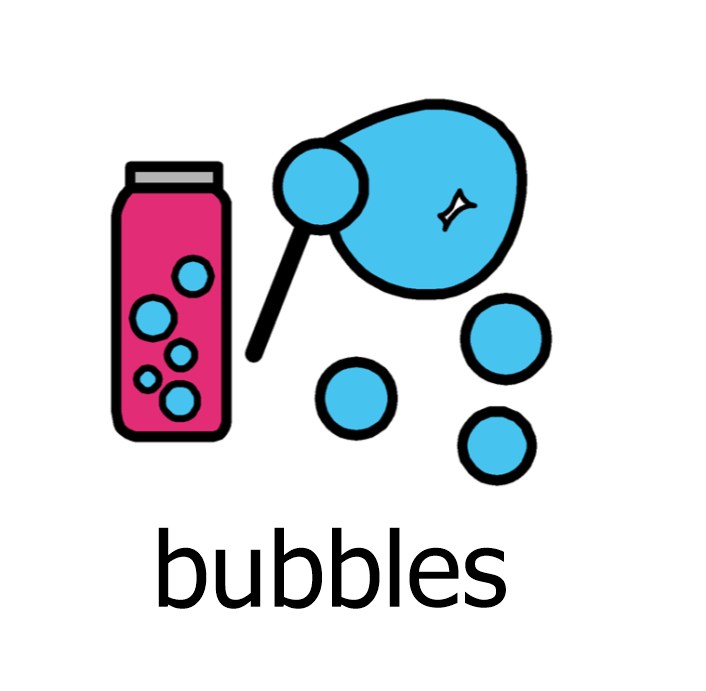Tip of the Month - April 2020 - Using Single Message devices
What are single and sequential message devices?
Single and sequential message devices allow you to record and store words, phrases and sentences.
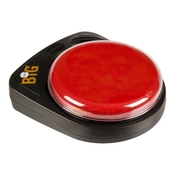 | 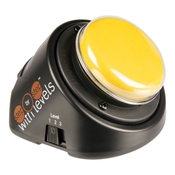 | 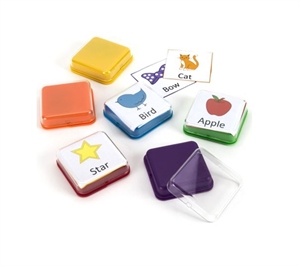 |
| Large Big Mack – single message device | Little Step by Step with levels – sequential message device | Big Point – single message device |
Why should we use single and sequential message devices?
We use language to communicate many different things, for example requesting something you want, gaining the attention of others, commenting etc. These are all important skills that enable us to communicate what we are thinking and share this with others effectively.
Single and sequential devices can be used to develop these skills and support the development of expressive and receptive language, social interaction skills, and emergent communication skills, i.e. cause and effect, turn taking, choice making etc. These devices are very versatile and can be used in many different ways to support language development.
Ideas for using single and sequential message devices
| 1.Order at a restaurant or buy a movie ticket. Can I have a mango smoothie? Ticket to Cars movie please. | |
| 2.Call everyone to dinner. Come on everyone, it’s dinner time! | |
| 3. Request breaks or to stop. I want a break, I need to stop | |
| 4. Turn the page when reading a book. Turn the page, Next page | |
| 5. Request to read a book. Again | |
| 6. Request a song. Sing it again, Sing Over the Rainbow, More singing | |
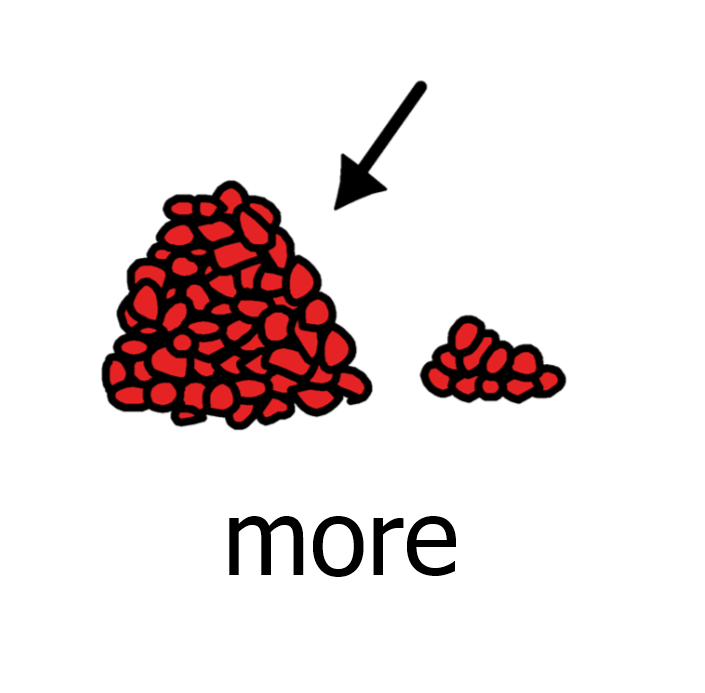 | 7. Request more of something that they really enjoy. E.g. Music, bubbles, lights, sensory toys, favourite kinds of physical contact. more, bounce me, tickle me, swing me, spin me, more yogurt e.g. Music. Start the music and let it play for around 30 seconds. Stop the music. Prompt them to ask for more, for example: “Can you use the button to tell me you want more?”. Make sure you give them enough time to respond. If they doesn’t respond, try gently moving their hand towards the button but allow for lots of time to do this. Immediately after the button is pressed, start the music again for another 30 seconds and then stop it. This should be repeated a few times to reinforce the idea. Using one Step by Step, record more said in different ways. This keeps the voice interesting for everyone, e.g. you could vary the volume (whisper, a shout) or the tone (positive, extremely positive, bored). |
| 8. Ask a question. Ask for help. Ask someone to join in. Ask a friend to play. Heya, wanna hang out with me? | |
| 9. Running a survey for maths, e.g. find out how people travelled to school. Excuse me, can I ask you a question? How did you travel to school today? How long did it take you? Do you like travelling like that? | |
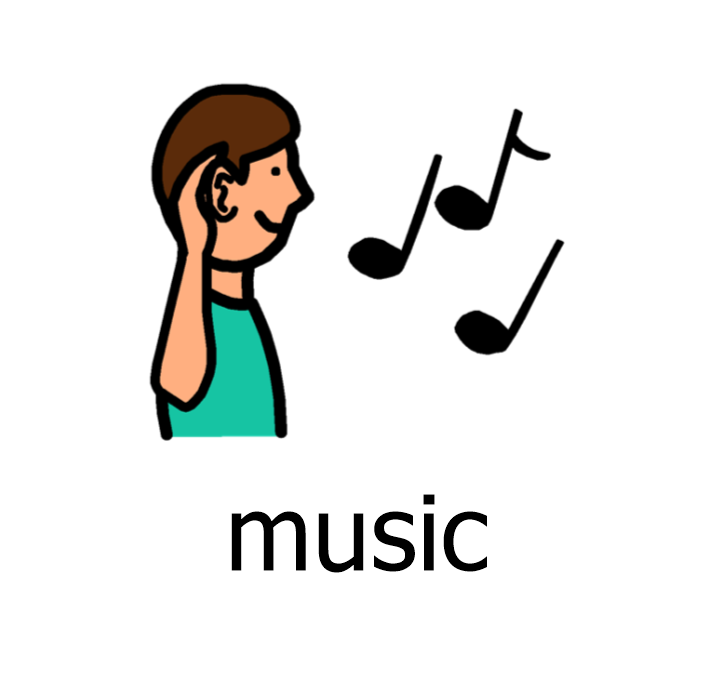 | 10.Become the DJ and request a song! Record song requests on a step by step and play the songs they ask for. Or if you have a device with a voice assistant like Siri, Google or Alexa, you could record: Hey Siri/Google/Alexa, play [song title]! … Hey Siri, play [artist’s name]… |
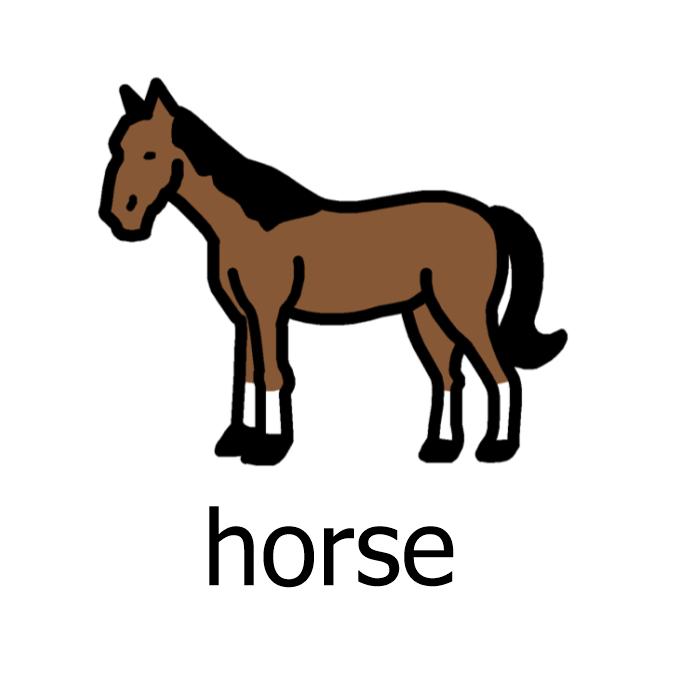 | 11. Make requests with animals. You could record each request on separate single message devices or all these phrases on a step by step. For a pet dog: sit…up…roll-over. For horse riding: walk-on…faster…stop |
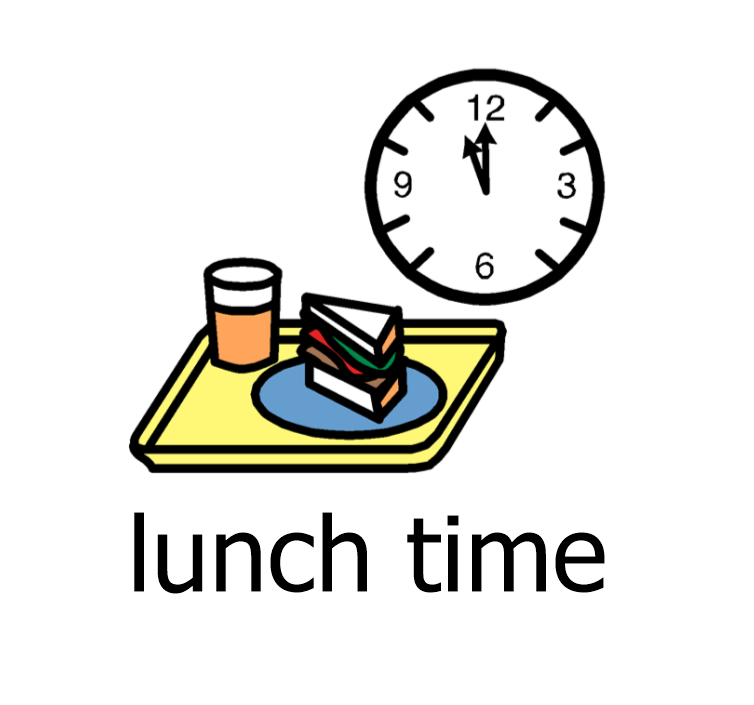 | 12. Add drama into the classroom by giving them a chance to be in charge of counting down to events. This could be done for all sorts of events, snack time, break time, home time. Everybody get ready for a snack in…5…4…3…2…1 |
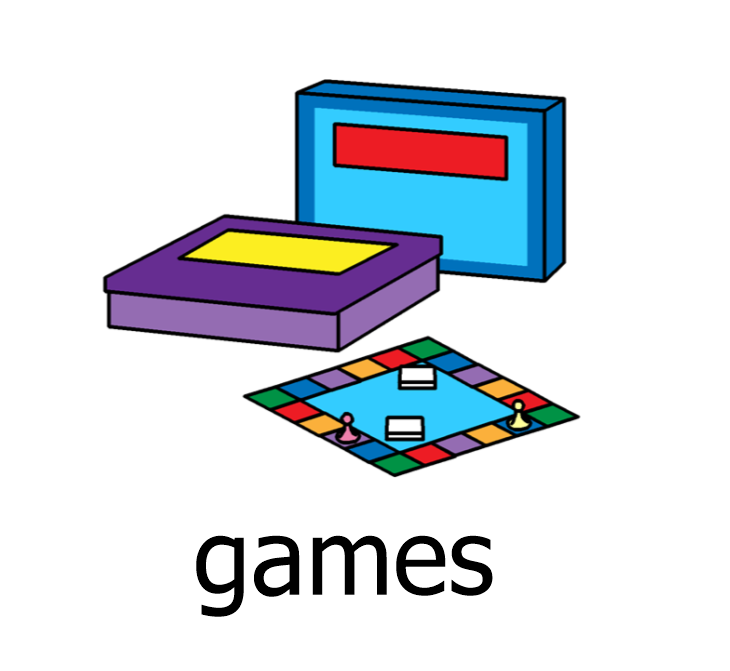 | 13. Game-related requests. You could record on separate single message devices different requests i.e. when playing board games: my turn… spin…move me… or when playing card games: draw four…pick a card. |
Initiating and gaining attention
14. Gain someone’s attention if help is needed. Mum/Dad/caregiver’s/teacher’s name, come here [name]! The person being called needs to respond promptly
15. Indicate their work has been finished or to look at something they did. I’m finished or look here!
16. Place items out of reach so they have to ask for them. Can I have? I want it!
17. Greeting or leaving peers/family at home/school. Good morning!, Mōrena!, Kia ora!, Mā te wā, See ya
18. Calling out. Hey I’ve got something to say!
19. Starting a race. Ready, steady, GO!
Responding
20. Saying Here! when school attendance is being taken
21. Yes/no/maybe/I don’t know i.e. Yes please! or No thank you, No way, Na ah!
Turn taking
| 22. Take part in a drama or play by saying your character’s lines on the device. | |
| 23. Answer name during roll call. I’m here, That’s me | |
| 24. Record a short/easy recipe and replay it in stages to tell others what to do. | |
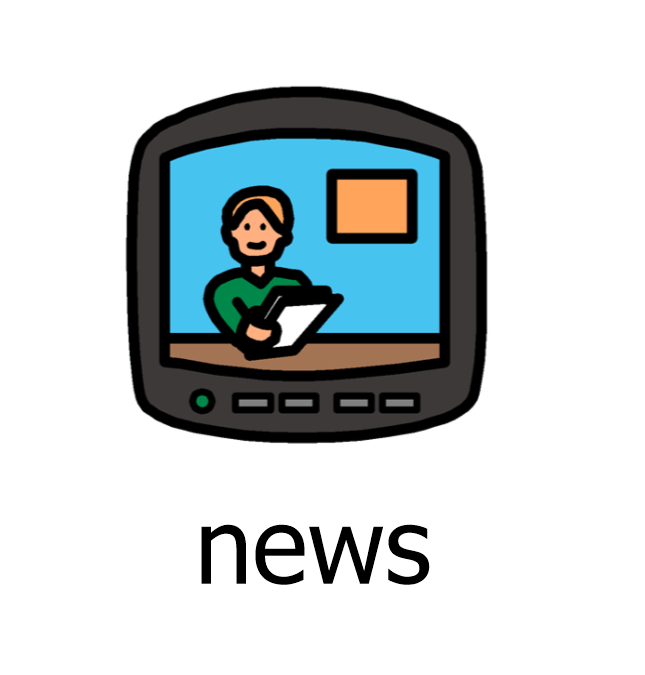 | 25. Sharing news. In typical conversation, people take turns. You can record news in a way that lets our learners to do the same. For example, you could record the parts in blue and italics: Guess what I did last night? What did you do? All my family came over for dinner. Wow really! What did you have? We had sweet and sour chicken Oh that sounds good! It was tasty! Hmmm yeah, it does sound tasty! That’s all! |
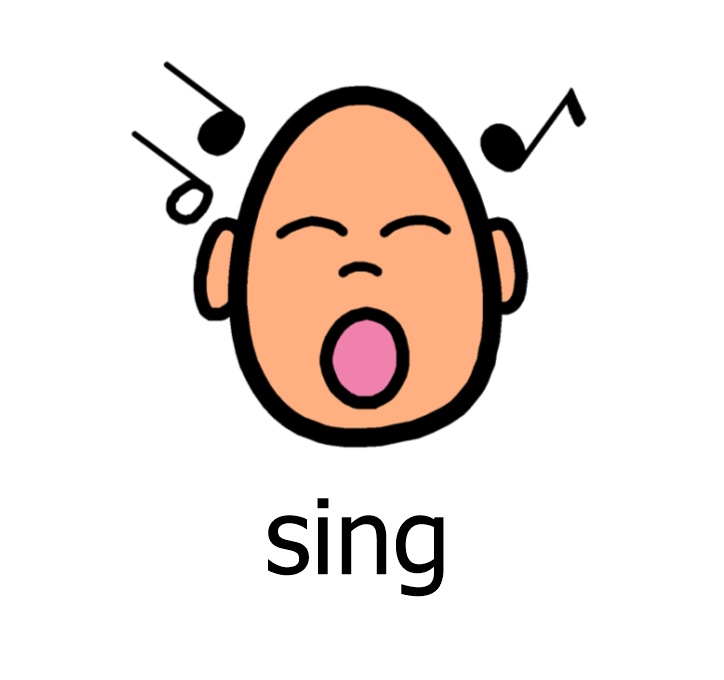 | 26. Singing songs. You can take turns when singing familiar songs. Record separate lines, don’t record the whole song. This means everyone can take turns to sing a line each. For the song Incy Wincy spider, you could record every other line. It may end up sounding like this: The Incy wincy spider…Climbed up the water spout…Down came the rain…And washed the spider out…And so on! |
 | 27. Jokes. Knock knock jokes are perfect for practicing turn taking. You can record the knock knock joke like: Want to hear a joke? Yeah sure! Knock Knock Who’s there Woo Woo who? Don’t get too excited, it’s just a joke! That’s great!! Do you want to hear another one? Knock Knock jokes like these could also be used to practice comedic timing: knock knock who’s there interrupting cow interrupting cow who/MOOOOOO Here are some websites with more jokes! https://www.funology.com/knock-knock-jokes/ https://www.ducksters.com/jokes/ https://www.activityvillage.co.uk/jokes-for-kids |
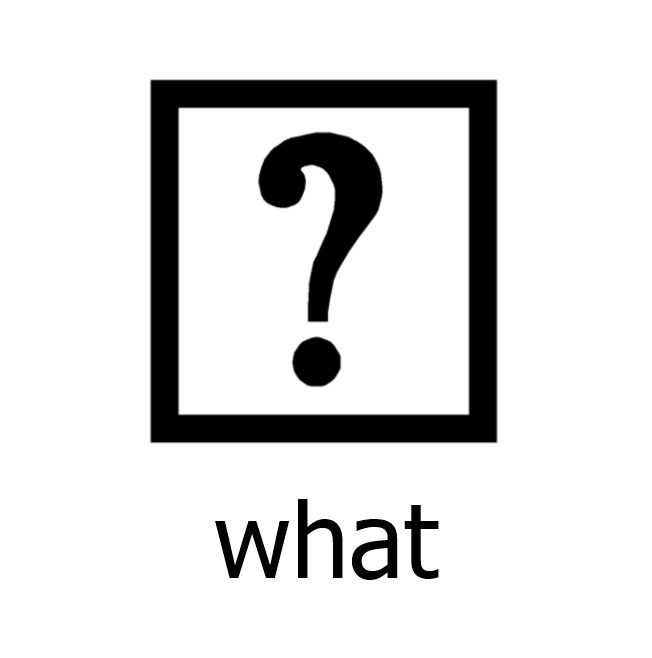 | 28. Record wh- questions to ask peer/family about their day or weekend. You could even use two different Step by steps, one to initiate wh- questions and another with recorded comments: i.e. on one device: What did you do this weekend?...What did you like most about it?...Thanks for sharing that. And on another device: Wow that’s awesome! … Yeah cool!... |
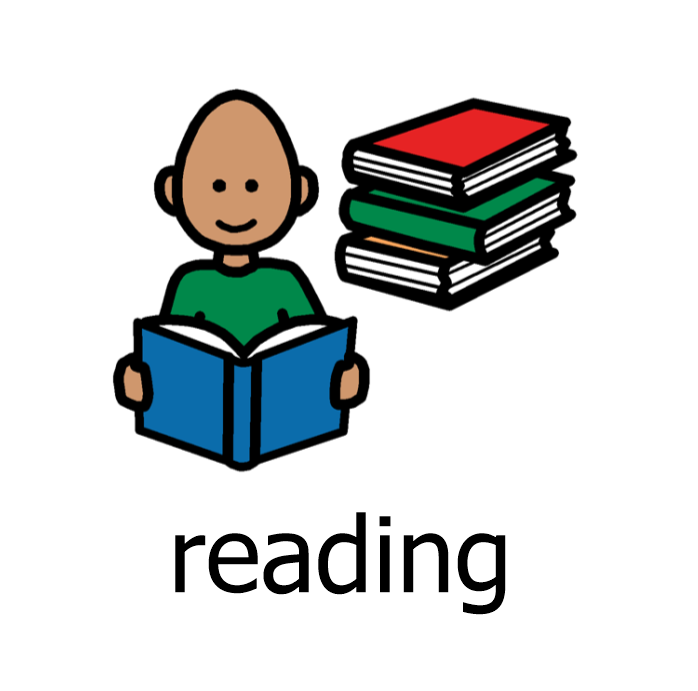 | 29. Books, sensory stories or songs with repetitive lines.
Record the line which repeats and encourage them to activate the device to take their turn in saying/singing the line. Alternatively you could also record a related sound effect, i.e. for The Very Hungry Caterpillar – record chomping and chewing noises. - Old Macdonald. Record: EIEIO. You can sing the song and prompt them to take a turn and say “EIEIO” at the appropriate time -Hairy Maclary. Record: from Donaldson’s Dairy. You can say “Hairy Maclary” and prompt them to use their device to say from Donaldson’s Dairy. -Brown Bear, Brown bear. Record: What do you see? -The Very Hungry Caterpillar. Record: But he was still hungry -See here for more books with repeated lines: bit.ly/repeatedlinebooks |
Choice making
These activities will require two single OR sequential message devices.
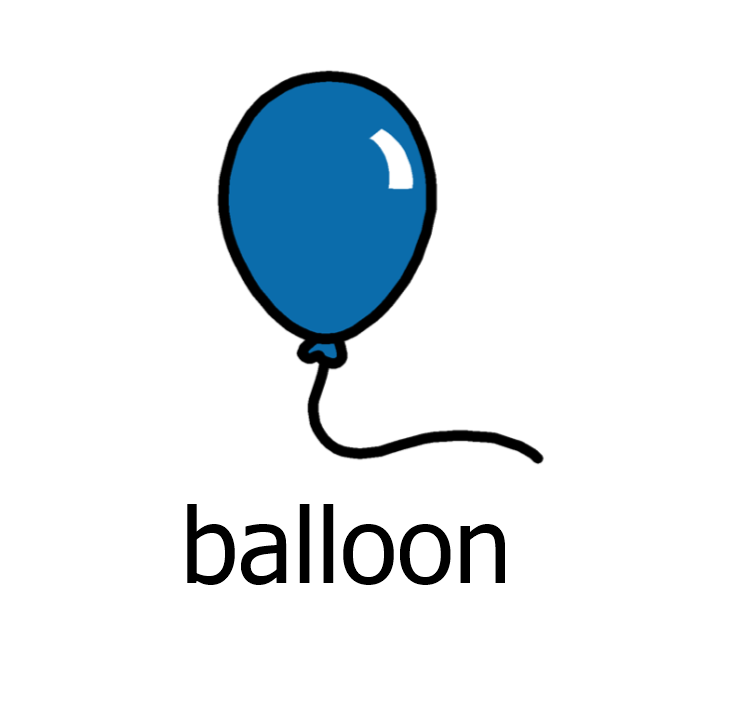 | 30. Cause and effect. Record one choice on one device and a different choice on another device. Give the choice of the two activities and wait for them to choose/activate a device. Honour their choice by completing the activity they chose. After the activity has finished, ask them to choose again. e.g. Record bubbles on one device and balloon on another. Depending on what they choose, either blow the balloon up and let it fly, or blow some bubbles. e.g. Record music on one device and lights on another. Turn either the music or lights on for 30 seconds, turn it off and then allow your child to choose again. e.g. fast or slow. This can be used in lots of different settings, being pushed in the wheelchair, or on a swing, singing or reading really fast or slow, pushing cars fast or slow, etc e.g. stop or go. With a toy car, a wheelchair, blowing bubbles, musical statues, etc |
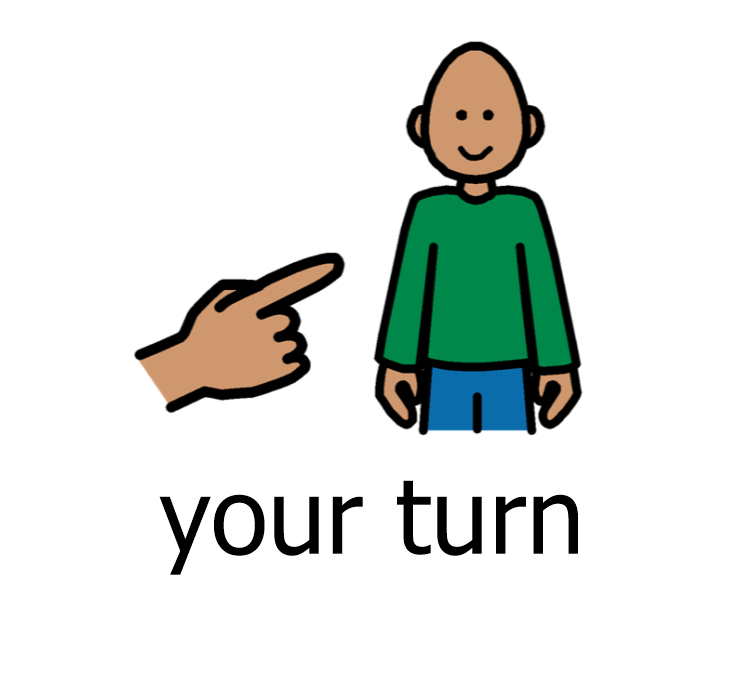 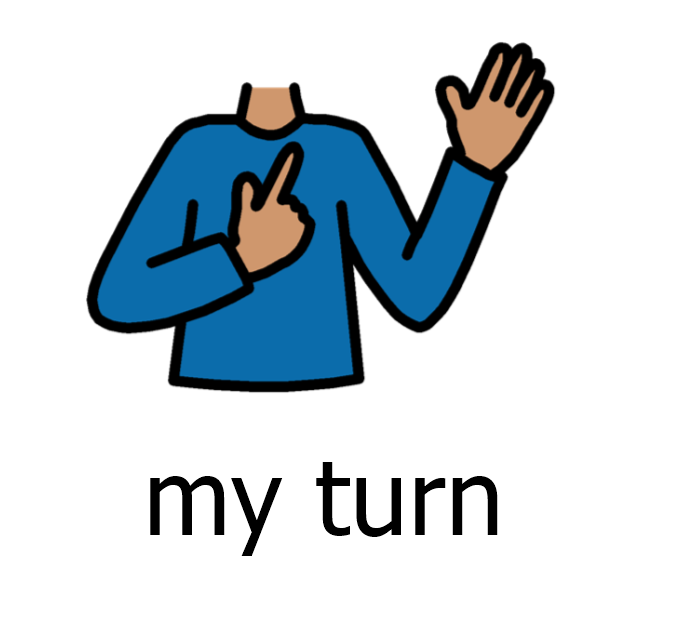 | 31. Leading games with peers/family/communication partners. put it in or pick it up or take a turn e.g. Simon says. You can record a series of messages on one Step by Step or record different directions on separate Big Points. clap! And stomp! e.g. Hokey Pokey. You can record each line one by one on a Step by Step or separate Big/Little Macks so they can say the line one by one and the others can move accordingly and wait for their instruction. put your right foot in and put your right hand out etc. e.g. Traffic lights. Record stop on one device and go on another device. People can run/walk on go and stand still like statues for stop. Stop and go can be used in a variety of other games. e.g. Duck Duck Goose. Record duck on one device and goose on another device. Depending on the person’s mobility, they can either be stationary and direct someone else to tap heads, or can move around. They can control the game by activating either duck or goose! |
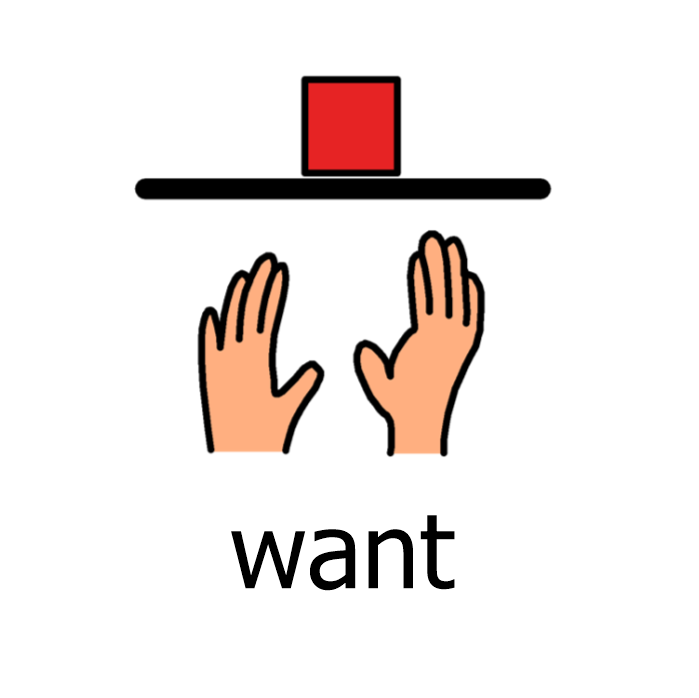 | 32. e.g. Record I want that one or that one! You could scan through different options one at a time and at an even pace and they can choose what they want by activating their device when you show them an option they want. Make sure to give enough time for them to respond. |
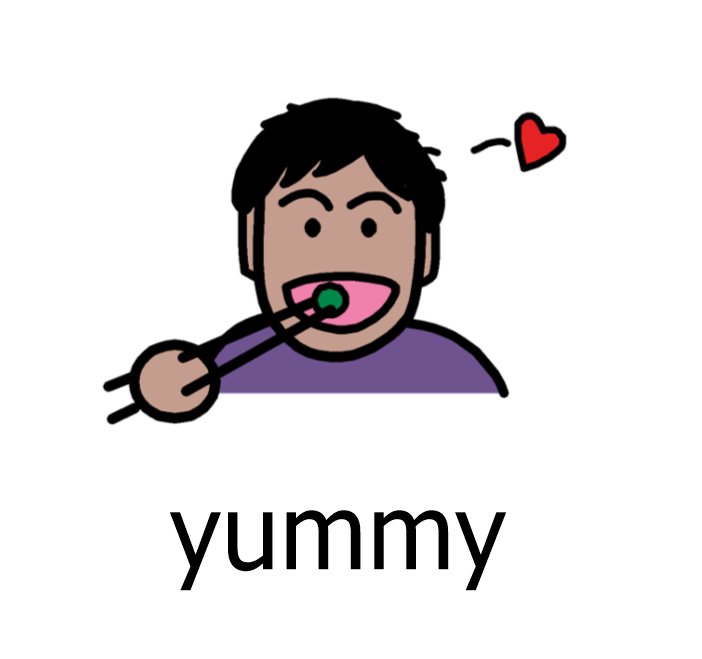 | 33. During meal times. e.g. Record more on one device and finished on another device. Or yummy on one device and yucky on another. They can use these messages at mealtimes to choose if they want more or they are finished, or what they liked/didn’t like eating. |
Commenting and Sharing information
| 34. Tell family members and friends: I love you | |
| 35. Record information for show and tell items either as a whole message using the Big/Little Mack or multiple messages using the step by steps. Mum, wanna here my news? Yeah! I did maths today! How was that? Maths is fun! | |
| 36. Saying karakia (prayers) or pepeha or scripture verse. | |
| 37. Share a poem. | |
| 38. Tell everyone: it’s lunch time or it’s play time or it’s time to wake up! | |
| 39. Give compliments: I like your new haircut | |
| 40. Deliver the morning announcements to the class. Announcements for Monday… Mrs Black says netball practice is cancelled today. | |
| 41. Add sound effects during a sensory story, e.g. record a car horn from YouTube and then play that sound during the appropriate place in the story | |
 | 42. Record information about activities completed at home or school. This information may then be used during Morning Talk at school the next day. Information can also be recorded at school to be told at home. This can be a single message or multiple messages using the step by steps E.g. I had fun at school today… open my bag…can you see my finger painting?...today I painted with Sue…do you like it? |
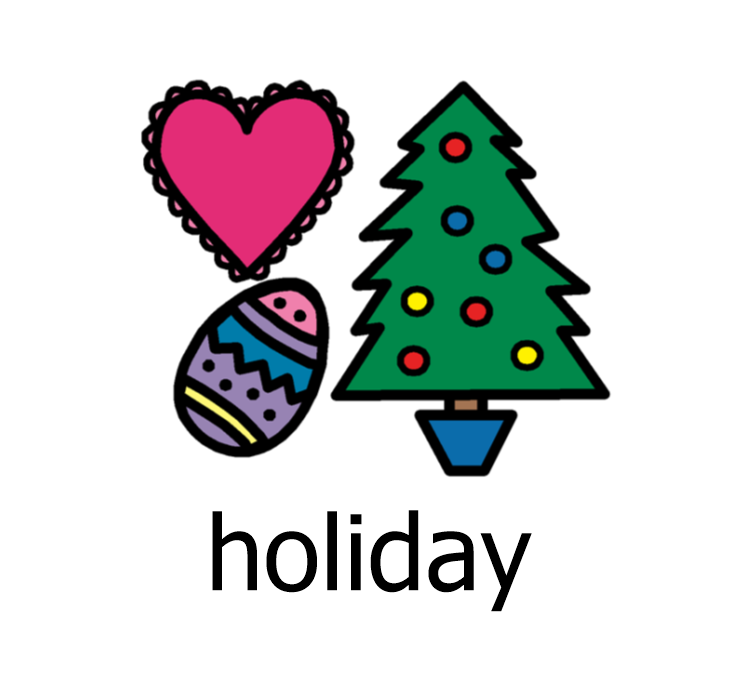 | 43. Wish seasonal festivities to others. Record seasonally appropriate messages i.e. Happy new year! Use a Step by Step to record a series of messages i.e. Only 20 more sleeps ‘till Santa… Have you been good?... Sing me a Christmas Carol? Trick or Treat? |
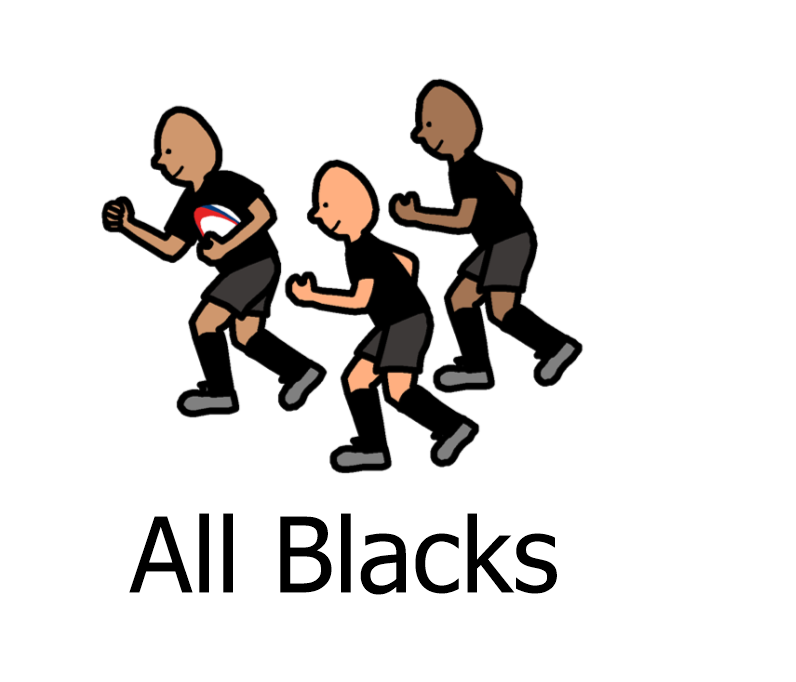 | 44. Cheer your favourite team or player. Go All Blacks! Wowee! Yay! Score! Or cheer your peers at sports day or siblings at their weekend sports game. |
| 45. Sing Happy Birthday. | |
| 46. Introduce and narrate a slideshow during assembly or for your class speech. At the end they could ask the audience quiz questions to or give them instructions about what will happen next. | |
| 47. Read spelling words to the class during the end of week spelling quiz. Asking quiz questions in class. We have spelling now… get ready…. government… | |
 | 48. Record a speech with a Step by Step. You could record a series of messages for a graduation, 21st birthday
parties, weddings, class projects. |
Ending a turn
49. Record: finished. This could be used for any activity, at meal times etc. I’m done! I’ve had enough!
50. Saying good bye. Bye! See ya, I’m leaving. Gotta go now, bye!
To make great recordings, remember: Short, Sweet and NOW
SHORT recording: Keep the language simple and use 1-3 word phrases. For example, more bubbles or go or one line of a song are really great SHORT messages. I want some more bubbles please Mr Jackson or 6 rounds of Old MacDonald is a bit too long for one message.
SHORT activity: Keep the activity short! Whatever they get shouldn’t last too long. This ensures that they don’t get bored and that they get lots of chances to communicate that message. By providing plenty of opportunities to communicate, the link between the message on the devices and the activity will be strengthened.
SWEET: Motivation is key! Choose something fun that they can engage with several times in a row.
NOW: Make sure they get to experience what they request within a few seconds. For example, requesting a round of bubble blowing is perfect as they will get an opportunity to request more many times during the short activity. Conversely, requesting to go for a walk is an activity that will take a lot of time and they won’t get another chance to practise this request until after the walk.
Using the device for something new? Remember these tips!
- Pause! Give enough time for them to respond.
- If they don’t respond, you can use your body language to show them you’re expectant. For more info see this Tip of the Month on how to vary your level of prompting: https://talklink.org.nz/resources/tip-of-the-month-february-2017-prompting
- Model, model, model! Show them what the switch is for. For example when modelling how to request more bubbles, you could model this by saying “I really would like to see more bubbles. I want MORE bubbles” and activate the switch for more, then you could say “Yes I want MORE bubbles”.
- Always record a new message with the person you are working with. This shows them they are part of the recording process and also will not give them a surprise when they next activate the button and something different is recorded on it.
Tips
It’s important that we support people using these devices with messages that are purposeful and relevant to their interests, needs and wants. Here are some handy tips!
- Always ensure your devices are labelled with a symbol or photograph to help your learner understand the meaning of the recorded messages. Use the clear plastic snap caps to hold labels on your device. Beware that if you laminate your labels, they may make the snap switch cap pop off more easily.
- Remember that we have ways of signalling the end of a conversation. It’s important that they can do this too! You could record I’m finished. Or Gotta go! Bye. If using a sequential message device, remember to include a finishing sentence i.e. That’s all I have to say.
- When choice-making, try to think of choices that can be made a few times, instead of one off choices (i.e. what to eat).
- Everyone needs to learn when not to talk as well as when to talk. If they activate the button before the activity has ended (i.e. music is still playing), acknowledge this and prompt them to wait, i.e. “oh you want MORE! We need to WAIT. WAIT for the music to FINISH.” and wait expectantly for when the music finishes.
- Remember that when focusing on cause and effect skills, it’s fun to include activities where human interaction is the “effect” i.e. tickles, blowing raspberries, hand games like Ground and Round the Garden or Pat-a-cake, peekaboo or hide and seek, high fives.
Extra resources
Check out our other Tip of the Months using switches below!
Have a look at these devices being used wonderfully in our YouTube playlist:
References:
https://www.spectronics.com.au/downloads/faqs/101+%20Ideas-for-Using-Communication-Devices.pdf
https://www.callscotland.org.uk/common-assets/cm-files/posters/keep-talking.pdf
https://www.spectronics.com.au/downloads/faqs/101-ways-to-use-sequential-message-aac.pdf
https://www.callscotland.org.uk/common-assets/cm-files/posters/20-ways-to-be-excellent-leaflet.pdf
https://teachingall.blogspot.com/2008/08/step-by-step-communicator.html
To download this Tip of the Month as a PDF, please click here
What are single and sequential message devices?
Single and sequential message devices allow you to record and store words, phrases and sentences.
 |  |  |
| Large Big Mack – single message device | Little Step by Step with levels – sequential message device | Big Point – single message device |
Why should we use single and sequential message devices?
We use language to communicate many different things, for example requesting something you want, gaining the attention of others, commenting etc. These are all important skills that enable us to communicate what we are thinking and share this with others effectively.
Single and sequential devices can be used to develop these skills and support the development of expressive and receptive language, social interaction skills, and emergent communication skills, i.e. cause and effect, turn taking, choice making etc. These devices are very versatile and can be used in many different ways to support language development.
Ideas for using single and sequential message devices
| 1.Order at a restaurant or buy a movie ticket. Can I have a mango smoothie? Ticket to Cars movie please. | |
| 2.Call everyone to dinner. Come on everyone, it’s dinner time! | |
| 3. Request breaks or to stop. I want a break, I need to stop | |
| 4. Turn the page when reading a book. Turn the page, Next page | |
| 5. Request to read a book. Again | |
| 6. Request a song. Sing it again, Sing Over the Rainbow, More singing | |
 | 7. Request more of something that they really enjoy. E.g. Music, bubbles, lights, sensory toys, favourite kinds of physical contact. more, bounce me, tickle me, swing me, spin me, more yogurt e.g. Music. Start the music and let it play for around 30 seconds. Stop the music. Prompt them to ask for more, for example: “Can you use the button to tell me you want more?”. Make sure you give them enough time to respond. If they doesn’t respond, try gently moving their hand towards the button but allow for lots of time to do this. Immediately after the button is pressed, start the music again for another 30 seconds and then stop it. This should be repeated a few times to reinforce the idea. Using one Step by Step, record more said in different ways. This keeps the voice interesting for everyone, e.g. you could vary the volume (whisper, a shout) or the tone (positive, extremely positive, bored). |
| 8. Ask a question. Ask for help. Ask someone to join in. Ask a friend to play. Heya, wanna hang out with me? | |
| 9. Running a survey for maths, e.g. find out how people travelled to school. Excuse me, can I ask you a question? How did you travel to school today? How long did it take you? Do you like travelling like that? | |
 | 10.Become the DJ and request a song! Record song requests on a step by step and play the songs they ask for. Or if you have a device with a voice assistant like Siri, Google or Alexa, you could record: Hey Siri/Google/Alexa, play [song title]! … Hey Siri, play [artist’s name]… |
 | 11. Make requests with animals. You could record each request on separate single message devices or all these phrases on a step by step. For a pet dog: sit…up…roll-over. For horse riding: walk-on…faster…stop |
 | 12. Add drama into the classroom by giving them a chance to be in charge of counting down to events. This could be done for all sorts of events, snack time, break time, home time. Everybody get ready for a snack in…5…4…3…2…1 |
 | 13. Game-related requests. You could record on separate single message devices different requests i.e. when playing board games: my turn… spin…move me… or when playing card games: draw four…pick a card. |
Initiating and gaining attention
14. Gain someone’s attention if help is needed. Mum/Dad/caregiver’s/teacher’s name, come here [name]! The person being called needs to respond promptly
15. Indicate their work has been finished or to look at something they did. I’m finished or look here!
16. Place items out of reach so they have to ask for them. Can I have? I want it!
17. Greeting or leaving peers/family at home/school. Good morning!, Mōrena!, Kia ora!, Mā te wā, See ya
18. Calling out. Hey I’ve got something to say!
19. Starting a race. Ready, steady, GO!
Responding
20. Saying Here! when school attendance is being taken
21. Yes/no/maybe/I don’t know i.e. Yes please! or No thank you, No way, Na ah!
Turn taking
| 22. Take part in a drama or play by saying your character’s lines on the device. | |
| 23. Answer name during roll call. I’m here, That’s me | |
| 24. Record a short/easy recipe and replay it in stages to tell others what to do. | |
 | 25. Sharing news. In typical conversation, people take turns. You can record news in a way that lets our learners to do the same. For example, you could record the parts in blue and italics: Guess what I did last night? What did you do? All my family came over for dinner. Wow really! What did you have? We had sweet and sour chicken Oh that sounds good! It was tasty! Hmmm yeah, it does sound tasty! That’s all! |
 | 26. Singing songs. You can take turns when singing familiar songs. Record separate lines, don’t record the whole song. This means everyone can take turns to sing a line each. For the song Incy Wincy spider, you could record every other line. It may end up sounding like this: The Incy wincy spider…Climbed up the water spout…Down came the rain…And washed the spider out…And so on! |
 | 27. Jokes. Knock knock jokes are perfect for practicing turn taking. You can record the knock knock joke like: Want to hear a joke? Yeah sure! Knock Knock Who’s there Woo Woo who? Don’t get too excited, it’s just a joke! That’s great!! Do you want to hear another one? Knock Knock jokes like these could also be used to practice comedic timing: knock knock who’s there interrupting cow interrupting cow who/MOOOOOO Here are some websites with more jokes! https://www.funology.com/knock-knock-jokes/ https://www.ducksters.com/jokes/ https://www.activityvillage.co.uk/jokes-for-kids |
 | 28. Record wh- questions to ask peer/family about their day or weekend. You could even use two different Step by steps, one to initiate wh- questions and another with recorded comments: i.e. on one device: What did you do this weekend?...What did you like most about it?...Thanks for sharing that. And on another device: Wow that’s awesome! … Yeah cool!... |
 | 29. Books, sensory stories or songs with repetitive lines.
Record the line which repeats and encourage them to activate the device to take their turn in saying/singing the line. Alternatively you could also record a related sound effect, i.e. for The Very Hungry Caterpillar – record chomping and chewing noises. - Old Macdonald. Record: EIEIO. You can sing the song and prompt them to take a turn and say “EIEIO” at the appropriate time -Hairy Maclary. Record: from Donaldson’s Dairy. You can say “Hairy Maclary” and prompt them to use their device to say from Donaldson’s Dairy. -Brown Bear, Brown bear. Record: What do you see? -The Very Hungry Caterpillar. Record: But he was still hungry -See here for more books with repeated lines: bit.ly/repeatedlinebooks |
Choice making
These activities will require two single OR sequential message devices.
 | 30. Cause and effect. Record one choice on one device and a different choice on another device. Give the choice of the two activities and wait for them to choose/activate a device. Honour their choice by completing the activity they chose. After the activity has finished, ask them to choose again. e.g. Record bubbles on one device and balloon on another. Depending on what they choose, either blow the balloon up and let it fly, or blow some bubbles. e.g. Record music on one device and lights on another. Turn either the music or lights on for 30 seconds, turn it off and then allow your child to choose again. e.g. fast or slow. This can be used in lots of different settings, being pushed in the wheelchair, or on a swing, singing or reading really fast or slow, pushing cars fast or slow, etc e.g. stop or go. With a toy car, a wheelchair, blowing bubbles, musical statues, etc |
  | 31. Leading games with peers/family/communication partners. put it in or pick it up or take a turn e.g. Simon says. You can record a series of messages on one Step by Step or record different directions on separate Big Points. clap! And stomp! e.g. Hokey Pokey. You can record each line one by one on a Step by Step or separate Big/Little Macks so they can say the line one by one and the others can move accordingly and wait for their instruction. put your right foot in and put your right hand out etc. e.g. Traffic lights. Record stop on one device and go on another device. People can run/walk on go and stand still like statues for stop. Stop and go can be used in a variety of other games. e.g. Duck Duck Goose. Record duck on one device and goose on another device. Depending on the person’s mobility, they can either be stationary and direct someone else to tap heads, or can move around. They can control the game by activating either duck or goose! |
 | 32. e.g. Record I want that one or that one! You could scan through different options one at a time and at an even pace and they can choose what they want by activating their device when you show them an option they want. Make sure to give enough time for them to respond. |
 | 33. During meal times. e.g. Record more on one device and finished on another device. Or yummy on one device and yucky on another. They can use these messages at mealtimes to choose if they want more or they are finished, or what they liked/didn’t like eating. |
Commenting and Sharing information
| 34. Tell family members and friends: I love you | |
| 35. Record information for show and tell items either as a whole message using the Big/Little Mack or multiple messages using the step by steps. Mum, wanna here my news? Yeah! I did maths today! How was that? Maths is fun! | |
| 36. Saying karakia (prayers) or pepeha or scripture verse. | |
| 37. Share a poem. | |
| 38. Tell everyone: it’s lunch time or it’s play time or it’s time to wake up! | |
| 39. Give compliments: I like your new haircut | |
| 40. Deliver the morning announcements to the class. Announcements for Monday… Mrs Black says netball practice is cancelled today. | |
| 41. Add sound effects during a sensory story, e.g. record a car horn from YouTube and then play that sound during the appropriate place in the story | |
 | 42. Record information about activities completed at home or school. This information may then be used during Morning Talk at school the next day. Information can also be recorded at school to be told at home. This can be a single message or multiple messages using the step by steps E.g. I had fun at school today… open my bag…can you see my finger painting?...today I painted with Sue…do you like it? |
 | 43. Wish seasonal festivities to others. Record seasonally appropriate messages i.e. Happy new year! Use a Step by Step to record a series of messages i.e. Only 20 more sleeps ‘till Santa… Have you been good?... Sing me a Christmas Carol? Trick or Treat? |
 | 44. Cheer your favourite team or player. Go All Blacks! Wowee! Yay! Score! Or cheer your peers at sports day or siblings at their weekend sports game. |
| 45. Sing Happy Birthday. | |
| 46. Introduce and narrate a slideshow during assembly or for your class speech. At the end they could ask the audience quiz questions to or give them instructions about what will happen next. | |
| 47. Read spelling words to the class during the end of week spelling quiz. Asking quiz questions in class. We have spelling now… get ready…. government… | |
 | 48. Record a speech with a Step by Step. You could record a series of messages for a graduation, 21st birthday
parties, weddings, class projects. |
Ending a turn
49. Record: finished. This could be used for any activity, at meal times etc. I’m done! I’ve had enough!
50. Saying good bye. Bye! See ya, I’m leaving. Gotta go now, bye!
To make great recordings, remember: Short, Sweet and NOW
SHORT recording: Keep the language simple and use 1-3 word phrases. For example, more bubbles or go or one line of a song are really great SHORT messages. I want some more bubbles please Mr Jackson or 6 rounds of Old MacDonald is a bit too long for one message.
SHORT activity: Keep the activity short! Whatever they get shouldn’t last too long. This ensures that they don’t get bored and that they get lots of chances to communicate that message. By providing plenty of opportunities to communicate, the link between the message on the devices and the activity will be strengthened.
SWEET: Motivation is key! Choose something fun that they can engage with several times in a row.
NOW: Make sure they get to experience what they request within a few seconds. For example, requesting a round of bubble blowing is perfect as they will get an opportunity to request more many times during the short activity. Conversely, requesting to go for a walk is an activity that will take a lot of time and they won’t get another chance to practise this request until after the walk.
Using the device for something new? Remember these tips!
- Pause! Give enough time for them to respond.
- If they don’t respond, you can use your body language to show them you’re expectant. For more info see this Tip of the Month on how to vary your level of prompting: https://talklink.org.nz/resources/tip-of-the-month-february-2017-prompting
- Model, model, model! Show them what the switch is for. For example when modelling how to request more bubbles, you could model this by saying “I really would like to see more bubbles. I want MORE bubbles” and activate the switch for more, then you could say “Yes I want MORE bubbles”.
- Always record a new message with the person you are working with. This shows them they are part of the recording process and also will not give them a surprise when they next activate the button and something different is recorded on it.
Tips
It’s important that we support people using these devices with messages that are purposeful and relevant to their interests, needs and wants. Here are some handy tips!
- Always ensure your devices are labelled with a symbol or photograph to help your learner understand the meaning of the recorded messages. Use the clear plastic snap caps to hold labels on your device. Beware that if you laminate your labels, they may make the snap switch cap pop off more easily.
- Remember that we have ways of signalling the end of a conversation. It’s important that they can do this too! You could record I’m finished. Or Gotta go! Bye. If using a sequential message device, remember to include a finishing sentence i.e. That’s all I have to say.
- When choice-making, try to think of choices that can be made a few times, instead of one off choices (i.e. what to eat).
- Everyone needs to learn when not to talk as well as when to talk. If they activate the button before the activity has ended (i.e. music is still playing), acknowledge this and prompt them to wait, i.e. “oh you want MORE! We need to WAIT. WAIT for the music to FINISH.” and wait expectantly for when the music finishes.
- Remember that when focusing on cause and effect skills, it’s fun to include activities where human interaction is the “effect” i.e. tickles, blowing raspberries, hand games like Ground and Round the Garden or Pat-a-cake, peekaboo or hide and seek, high fives.
Extra resources
Check out our other Tip of the Months using switches below!
Have a look at these devices being used wonderfully in our YouTube playlist:
References:
https://www.spectronics.com.au/downloads/faqs/101+%20Ideas-for-Using-Communication-Devices.pdf
https://www.callscotland.org.uk/common-assets/cm-files/posters/keep-talking.pdf
https://www.spectronics.com.au/downloads/faqs/101-ways-to-use-sequential-message-aac.pdf
https://www.callscotland.org.uk/common-assets/cm-files/posters/20-ways-to-be-excellent-leaflet.pdf
https://teachingall.blogspot.com/2008/08/step-by-step-communicator.html
To download this Tip of the Month as a PDF, please click here

